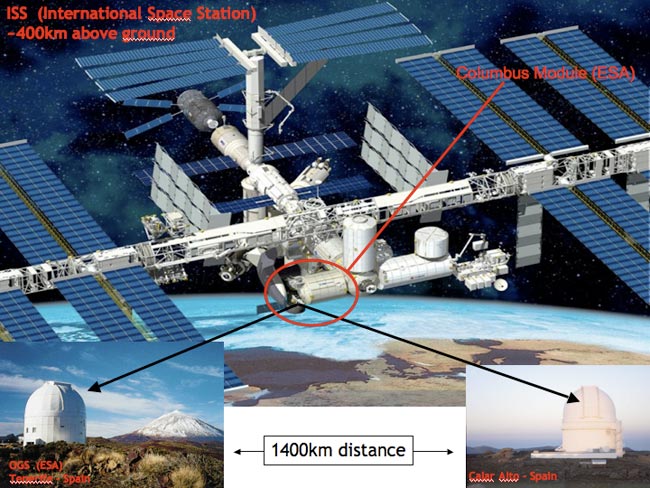Quantum Information Science can be utilized to improve the security of satellite communication. Dr. Michael Leuenberger is currently exploring this possibility from both a theoretical and an experimental perspective. This approach has the potential of providing unconditionally secure quantum communication between land-based stations and satellites.

Quantum communication has tremendous potential; however, there are current roadblocks to overcome to solve real world problems such as creating a system that can function at distances greater than 10 km. Quantum communication is based on a phenomenon called “quantum entanglement.” Quantum entanglement occurs when two quantum-information carriers, such as photons, are aware of each other’s existence and know each other’s particular quantum state, i.e. they are quantum-mechanically correlated, despite being physically separated at long distances. It is one peculiar effect of the strange, mysterious world of quantum physics.
Currently, photon channels, such as fiber-optic cables, are the only realistic choice for quantum communication. However, creating high-fidelity quantum entanglement between photons at two distant locations becomes exponentially more difficult as the distance between them increases, seriously impeding the real-life implementation of quantum communication. Extending the range to practical distances remains a challenge on many levels.
In Figure 1 an illustration of an upcoming test of a Quantum Information encryption method is depicted which will utilize two base stations in Spain and a mobile quantum station located in the Space Station. In an upcoming experimental test, the International Space Station is going to send concurrent signals made of pairs of entangled photons, the “flying qubits”, to two earth base stations located in Spain through two quantum channels. Although these base stations are located 1400km apart and the Space Station is orbiting around earth at ~ 400km above the surface of the earth, the goal of the experimental test is to demonstrate that the base stations will be able to receive the pairs of entangled photons, thereby producing a secure quantum link between the two base stations. The Columbus Module in the Space Station will function as the source of pairs of entangled photons, which in the future will be able to produce a secure quantum link between many more locations on earth. This quantum link can be stored by the base stations in local spins in quantum dots, corresponding to “stationary qubits”. If Dr. Leuenberger’s method is correct, he will be able to create a secure link between these locations, even at this extreme distance. Such a finding would significantly advance the utility of this approach.
For More Information
Dr. Michael Leuenberger
NanoScience Technology Center
University of Central Florida
Orlando, FL 32826